What to Eat in the Mekong Delta
The Mekong Delta is a foodie’s paradise, one blessed with natural alluvial soils carried from the Mekong River, deposited along the banks, creating the ideal fertile wonderland. With this being said, the question of what to eat in the Mekong Delta is one with many answers. Aside from rice and fruit, the Mekong is blessed with seafood in its abundant rivers and canals, as well as all other produce that such tropical climates can afford. Here, we look at the best things to eat in the Mekong Delta to get a real taste of the region through its fabulous specialties and delicacies.
Bún Cá
One seafood dish is bun ca, with a very telling translation of ‘fish noodles’, and a favourite of instagrammers for its mishmash of colourful ingredients. The rice noodle, bun, is accompanied by slices of boiled snakehead fish, some prawns, pork, and various green vegetables and beansprouts, all of which sits in a steaming fishy broth. If this is sounding like an overly fishy concoction, then you may want to visit one of the restaurants that uses the roots of an autumn crocus to mask the scent of fish. This is one of Vietnam’s signature dishes, and deservedly so.
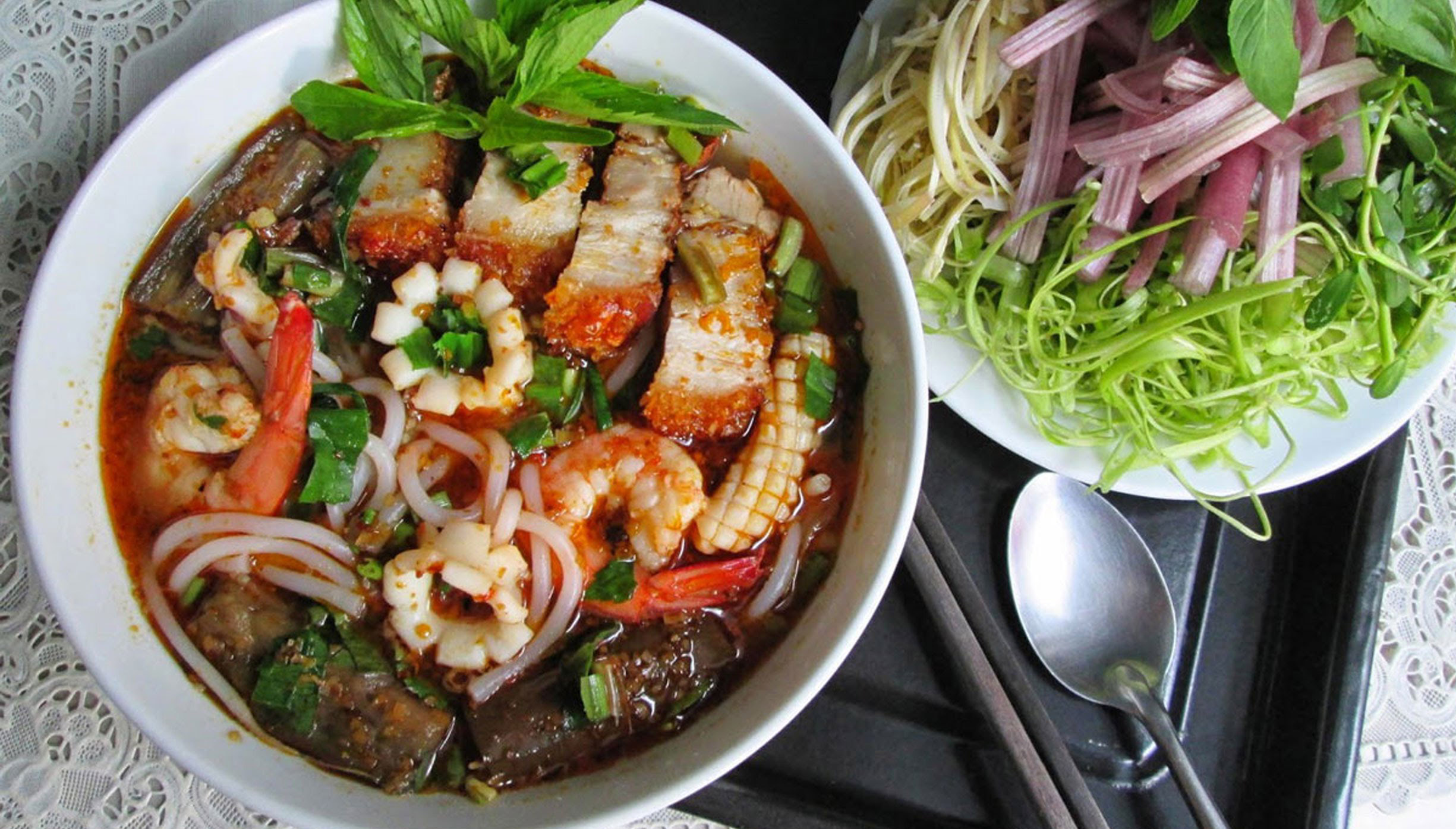
This nationally popular dish won’t be hard to find anywhere in the country, let alone in the vast waterways of the Mekong Delta. Many vendors at Cai Be and Cai Rang floating markets will serve up this classic piece of Mekong Delta cuisine from the convenience of their own floating kitchens.
Hủ Tiếu Mỹ Tho
Hu tieu My Tho is one such variation, coming from the city of My Tho, which lies on the northern banks of the Mekong River. As with most food in the region, this dish features at least a nod to the Mekong Delta’s strong fishing culture, with prawns set amongst pork and liver, while variations within this regional variation can feature fish balls or squid. Added vegetables like spring onion, shallots and chives are all optional, but they invariably sit in a colourful bowl, swimming in a pork stock soup. Even 70km up the road in Vietnam’s burgeoning metropolis, patrons enjoy a different version of Hu Tieu, and daytrips from Ho Chi Minh City to the Mekong Delta can provide a more conclusive look at the diversity of this flavourful dish.
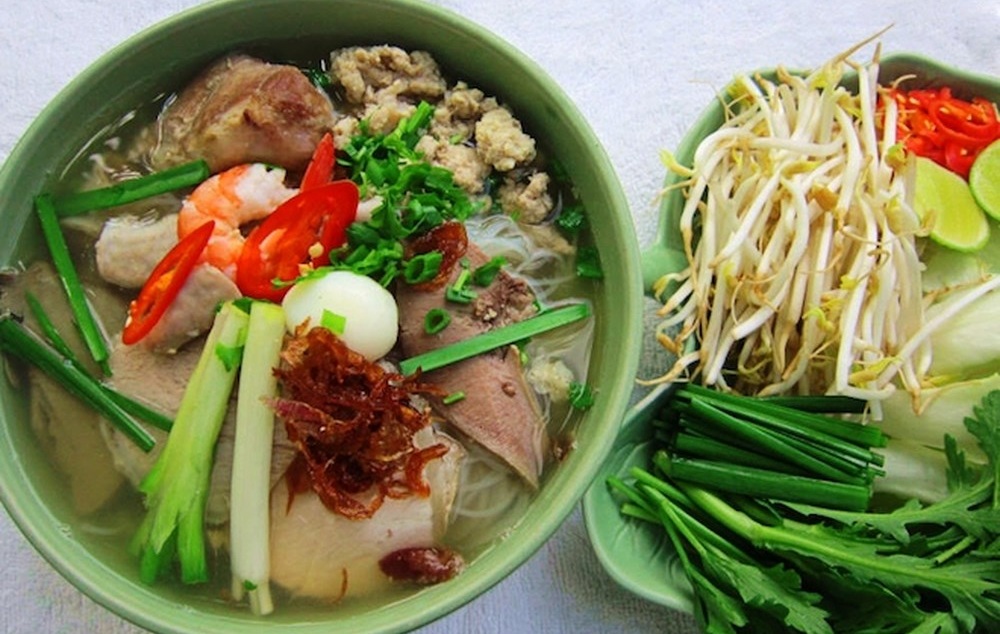
Bánh Xeo
Named for the sizzling sound it makes when the raw ingredients are thrown together into the frying pan, banh xeo is not only one of the easiest and most effortless things to eat in the Mekong Delta, but nationwide as well. Its popularity is born for its ease of construction, ease of eating and powerful flavour with a beautifully crunchy texture. In the Mekong Delta, the ingredients inside the taco-like rice paper shell include pork, shrimp, chicken, beansprouts and mushrooms, all folded and fried to create a crispy pancake that is then dipped into fish sauce and devoured. Despite the dozens of versions of banh xeo cooked daily throughout the country, you will have to go a long way to find one bigger than in the Mekong Delta, where one pancake can take the force of two hungry diners.
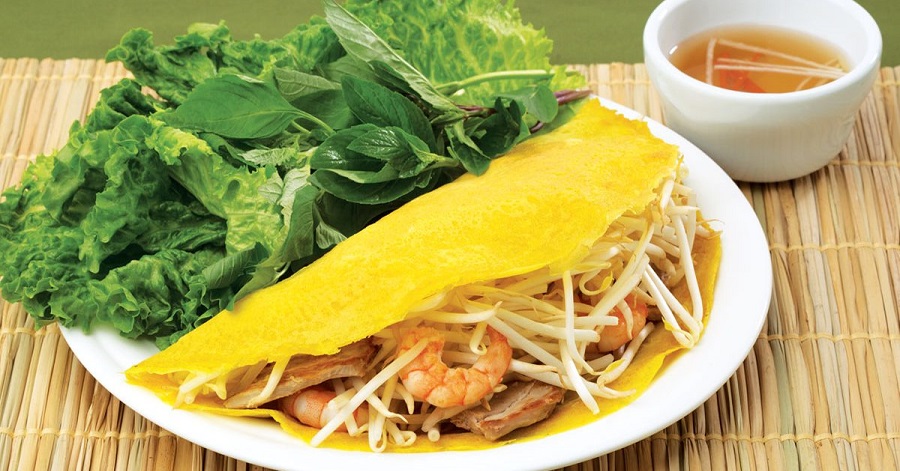
The simple nature of banh xeo means that it can be made anywhere; on boats, on the streets, at home or in restaurants. The likely places to find it are in the Delta’s various provincial capitals, such as Can Tho, My Tho and Soc Trang. You can find particular speciality restaurant at Ban Xeo Ca Mau (Le Loi Street, Can Tho).
Cá Tai Tượng
The giant gourami is nicknamed the ‘elephant ear fish’ for its saggy, grey appearance. While not all that much to look at, the elephant ear fish endures as one of the most popular foods in the Mekong Delta, and is included in many southern Vietnam tours as an introduction to the wonderful seafood of the country. Its serving can be a little shocking, as it is usually deep-fried whole, with scales, fins, tail and all, and placed vertically in a stand for diners to pick apart with chopsticks. Although the bones make eating it a fairly labour-intensive experience, the crispy skin and tender meat are the delicious reward, and the accompanying noodles, rice, vegetables, rice paper or sweet and sour sauce only serve to bring out the punch of this flavourful Mekong fish.
The best way to tackle the elephant ear fish is with a guide on a south Vietnam tour package, as the nature of the fish requires delicate serving and an experienced hand to dig through the bones. These tours usually stop off in Can Tho, where you can head to a humble restaurant like Lang Tre Phi Ho (118/9/78B Le Loi Street).
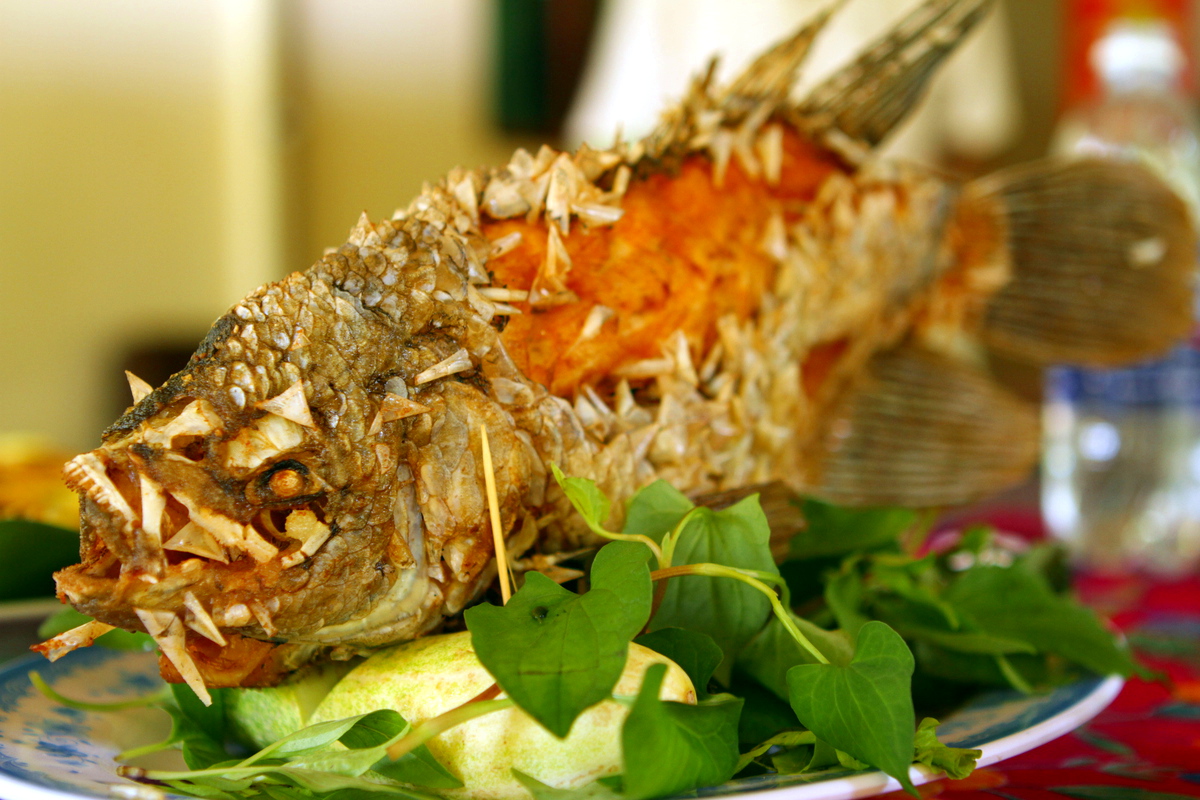
Lẩu Cá Kèo
If the elephant ear fish is too intimidating a meal, then maybe for you, what to eat in the Mekong Delta will be the more innocent-looking goby fish. The long, thin and smooth bodies of the goby fish offer a completely different dining experience, and its serving in hotpot style make it one of the more sociable lunches on a daytrip from Ho Chi Minh City to its southern neighbour. The goby fish are usually eaten whole after receiving a thorough boiling in the broth, bubbling alongside ingredients like tomatoes, dried onions, leafy greens and garlic. These are used to bring out the bitterness of the broth and highlight the flavour of the fish, which can grow to 15cm in length in the rich waters of the Mekong Delta.
For a slow and indulgent lunch, head to Lau Ca Keo 86 (86 Mac Thien Tich, Can Tho), where plates of fish and vegetables are piled high, awaiting their introduction into the hotpot.
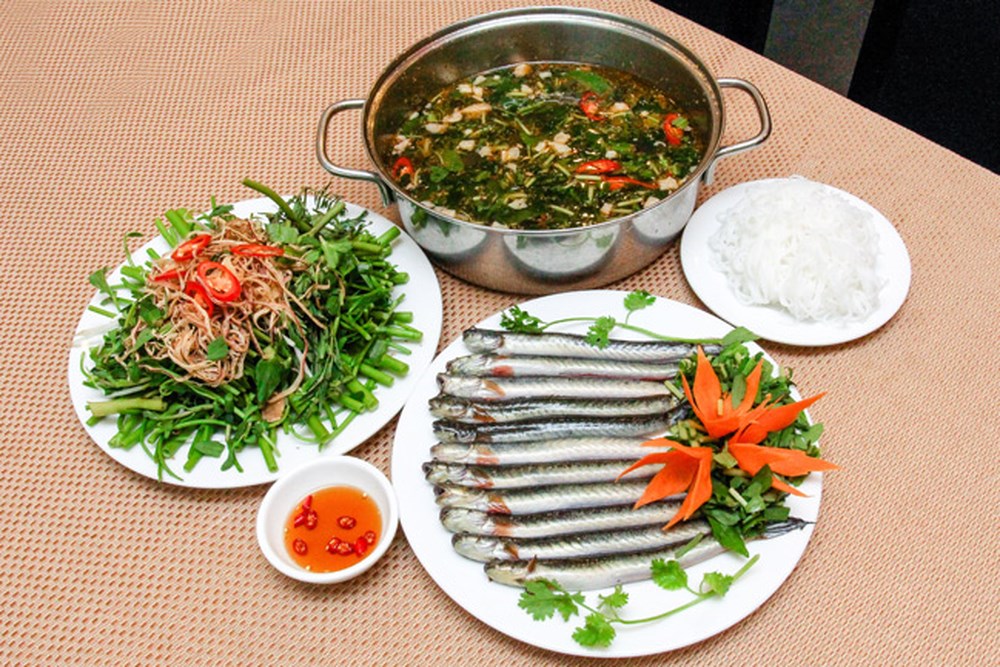
Bánh Pía
The strong smell of durian fruit might put a lot of people off the banh pia, but it certainly found a lot of favour in the Chinese community, who emigrated from the Chaoshan region of China to find a new life in and around the old Saigon. Many settled in Soc Trang, one of the more diverse of the Mekong Delta’s cities, bringing the ‘pia cake’ with them. These are baked buns with green beans, a salted egg and the infamous durian fruit, known for its intense pungency. Savoury flavours can have minced pork and mung bean paste, all covered with a buttery casing that creates a rich appearance and dense flavour – certainly one of the best things to eat in the Mekong Delta.
It would be sacrilege to try the speciality of Soc Trang anywhere other than the city itself, or in Saigon if you’re not joining a Mekong Delta tour from Ho Chi Minh City. The most famous company to produce banh pia are Tan Hue Vien, who sell their products throughout the city of Soc Trang, and even make it up to Hanoi, such in the popularity of this delicious piece of Mekong Delta dessert
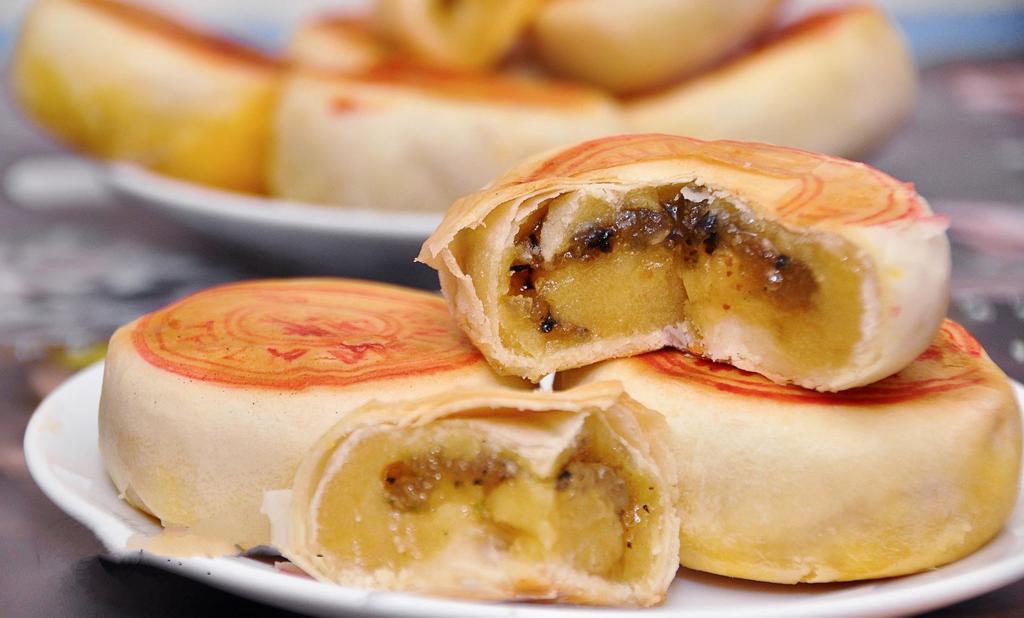
Bánh Cóng
Another output of the prolific city of Soc Trang, banh cong is a firm shrimp ‘muffin’, and also a firm favourite food to eat in the Mekong Delta for its many residents. Peeled and salted shrimps are placed into a liquid batter of flour, coconut milk and oil, before the whole thing is placed in the fryer, creating a crispy coating but fluffy interior. Along with the shrimp, minced pork and the ubiquitous onions and shallots are added, making a delicious snack and a great souvenir to take away from your Vietnam holiday package.
The ease of banh cong’s construction makes it one of the best street foods to eat in the Mekong Delta. You will find it along the streets of many cities, but Can Tho in particular, and can be experienced best on a food tour of the city.
Đuông Dừa
The resourceful Vietnamese have always found a way to make the best of a bad situation. For the residents of Ben Tre and other provinces of the Mekong Delta, the plague of worms eating through their precious coconuts is a constant one, but alleviated somewhat by the tastiness of the worm itself, which is one of the delicacies of the Mekong Delta. These fat grubs are served either grilled or alive and swimming in a small bowl of chili and lime-infused sauce – most certainly not a dish for the faint hearted. It’s also not a dish for those strapped for cash, as a kilogram of this costs around 500,000 VND ($22).
Naturally, the huge coconut trees of Ben Tre are a prime target for these coconut worms. Restaurants around the province, such as Nha Hang Noi Ben Tre, serve duong dua by the bowlful, if you can stomach more than one.
Source: incredibleasiajourneys
